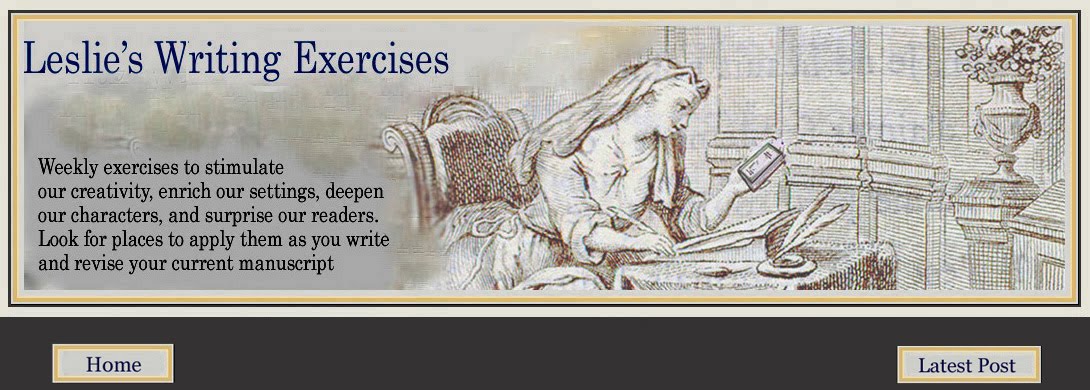I was re-reading one of my favorite Hollinghurst novels recently, hoping to somehow absorb through osmosis his exquisite way with language -- ah, those gorgeous sentences! His character descriptions in particular are lovely little works of art: lush, accurate, and insightful; and as Anton Chekhov would most likely say, "rendered with immediate and telling detail." Even his walk-on characters come alive on the page with just a quick, simple stroke of his brush.
In average stories minor characters and walk-ons are often easy-to-forget cardboard placeholders given little attention by their authors. In better stories authors turn simple character snapshots into living, breathing personalities, usually by adding one or two carefully chosen "telling" details (think of them as significant, revealing, or defining details—not to be confused with "show, don't tell") as in these examples from several award-winning authors and literary giants:
= She was fifteen and she had a quick nervous giggling habit of craning her neck to glance into mirrors, or checking other people's faces to make sure her own was all right. [Joyce Carol Oates]
= His eyes were pinpoints of trouble, his mouth a flat line of pain, his shoulders so strong and high that he appeared to have no neck at all. He entered the room as if he'd just been asked to ascend a throne and, after an initial reluctance, now meant to show just how decisive he could be. [Edmund White]
= [He was] very good company but somehow remote, the sort of person it is hopeless to fall for, as I quite did at first, with his hooting laugh and witty sentimental conversation. [Alan Hollinghurst]
= There was something very strange in him; there was a light in his eyes as though of intense feeling--perhaps there were even thought and intelligence, but at the same time there was a gleam of something like madness. [Fyodor Dostoevsky]
= There was a hint of spring in her sloe-green eyes, something summery in her complexion, and a rich autumn ripeness in her walk. [Toni Morrison]
= [He] was geeky, nerdy. His body was a stalk supporting the tulip of his brain. As he walked to the car, his head was often tilted back, alert to phenomena in the trees. [Jeffrey Eugenides]
= He was easily over six feet tall but appeared to regret it. [Edmund White]
= Doa Vicenta, a woman with a dull brain, who when she was not sleeping, was complaining of everything, especially the noise… [Miguel De Unamuno]
= He had on the grey suiting of a business man, but with unusual tucks and vents, which seemed to hint at his role in the arts. [Alan Hollinghurst]
= She had a radish-white, almost raw-looking body and a tiny head made big by puffed-up hair. He never saw her out of her old torn kimono. [Edmund White]
= A priest. A young priest, black-suited, with a black felt hat, one hand stiffly in his jacket pocket, thumb hooked outside, the other holding a black breviary, finger keeping the page. So tall, his head had a stoop. Wire-framed spectacles saddled his nose. Oddly, ever so, foreign-looking. [Jamie O'Neill]
= She recognized most things about him, the tight jeans that showed his thighs and buttocks and the greasy leather boots and the tight shirt, and even that slippery friendly smile of his, that sleepy dreamy smile that all the boys used to get across the ideas they didn't want to put into words. [Joyce Carol Oates]
= He was quite spotty, although probably about my age, and wore hopeless clothes--shapeless jeans, fluorescent trainers and complicated musician's knitwear; but he was beautiful, with his dirty blond hair and chestnut eyes. [Alan Hollinghurst]
= Connie saw with shock that he wasn't a kid either--he had a fair, hairless face, cheeks reddened slightly as if the veins grew too close to the surface of his skin, the face of a forty-year-old baby. [Joyce Carol Oates]
= His ungloved hands, as big and white as boiled hams, hung down at his side. He was wearing a velvet-collared Chesterfield which he'd thrown open as if to breathe more easily, or to cool off, though it was a cold night. [Edmund White]
= He had fair brown hair, with a lock that fell onto his forehead. His sideburns gave him a fierce, embarrassed look… [Joyce Carol Oates]
In Writing Fiction, The Practical Guide (from Gotham Writers' Workshop) Chris Lombardi defines what Chekhov means when he refers to telling detail:
A telling detail does what it says: it tells the essence of what it's describing. Telling details are the scotch tape holding up Susie's hemline in the back, the tiny piece of ice that never seemed to melt in the bottom of Mom's martini, the street sign on the corner that still says, to this day, SCHOOL CROSSING, though the school is long gone. A telling detail can speak volumes in a very short amount of time. They help you achieve a golden mean--enough description to paint the picture, but not so much as to weigh it down.
Brandi Reissenweber, author of the "Ask the Writer" column in "The Writer" magazine, cautions not to use too many details when one or two precisely-chosen details will accomplish the task:
Many writers will pile on details in an effort to capture a character, setting, or moment. This is certainly useful in early drafts, as writers don't often hit on the best details right away. Over describing can be a great way to find telling detail. It's important to go back and pare out what isn't necessary so that the good stuff doesn’t get lost in the clutter.
Joyce Carol Oates, "Where Are You Going, Where Have You Been?"
Chris Lombardi, "Description: To Picture in Words" from Gotham Writers' Workshop, Writing Fiction, The Practical Guide
Brandi Reissenweber, "Ask the Writer"
~


